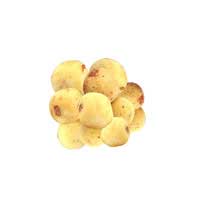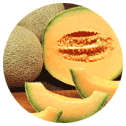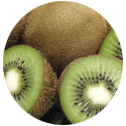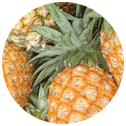 Full List of Fruits
Full List of Fruits  Marula Fruit
Marula FruitMarula Fruit
Scientific name - Sclerocarya birrea
Sclerocarya birrea, commonly known as the Marula is a medium-sized dioecious tree, native to the Miombo woodlands of Southern Africa, the Sudano-Sahelian range of West Africa, and Madagascar. Set apart by a grey mottled bark, with a wide scattering crown, this single stemmed tree grows up to 18m tall mostly in low altitudes and open woodlands.
The succulent fruit is tart, strong and distinctively flavored; moreover, contains high amount of Vitamin C content, just about eight times more than the amount found in an orange. Inside view- thick-walled stone, that is walnut sized. Marula fruit that ripens between December and March have a light yellow skin with flesh that's white in color. When dry, it exposes the seeds by shedding 2 sometimes 3 tiny circular plugs at one end. The seeds are very delicate and exude a nutty flavor that is sought-after by small rodents.
![]() Nutritional Value of Marula Fruit
Nutritional Value of Marula Fruit
The fruits are rich in
 Vitamin C
Vitamin C
 Oleic acid
Oleic acid
 Antioxidants
Antioxidants
The nuts are nutritious and contain high levels of:
 Minerals like iron, magnesium, zinc, phosphorus and copper.
Minerals like iron, magnesium, zinc, phosphorus and copper.
 Protein
Protein
 Energy
Energy
| Moisture | 4.0 |
| Ash | 3.8 |
| Protein (g/100g) | 28.3 |
| Fat (g/100g) | 57.3 |
| Fibre (g/100g) | 2.9 |
| Carbohydrates (g/100g) | 3.7 |
| Energy Values (KJ/100g) | 2703 |
| Ca (mg/100g) | 118 |
| Mg (mg/100g) | 462 |
| Fe (mg/100g) | 4.87 |
| Na (mg/100g) | 3.81 |
| K (mg/100g) | 601 |
| Cu (mg/100g) | 2.81 |
| Zn (mg/100g) | 5.19 |
| P (mg/100g) | 808 |
| Thiamine (mg/100g) | 0.42 |
| Riboflavin (mg/100g) | 0.12 |
| Nicotinic Acid (mg/100g) | 0.72 |
![]() Health benefits of Marula Fruit
Health benefits of Marula Fruit
Loaded with protein and fat, the seeds give out a subtle nutty flavor and contain antioxidants and oleic acid. As far as the bark of the tree is concerned, they are useful in the treatment of more than two disorders like dysentery, diarrhea, moreover they are used as prophylaxis for malaria. A concoction of inner bark of the tree is used to scorpion stings and snake bites; it is believed to alleviate pain. Having said that, the green leaves of the tree is said to relieve heartburn. Oil extracted from the fruit of marula acts as a great skin care agent. It's an all-natural skin smoothing agent that helps for a soft and supple skin. Containing high levels of essential fatty acids and important anti-oxidants it offers advanced skin protection against photo aging.
Turning yellow when ripe, the fruits ripe anytime between mid January and mid March and fall; the fruits of the tree are collected from under the trees. When the outer shell becomes dry the nuts are collected, if not one has to crack the shell to take out the nut that's edible.


















